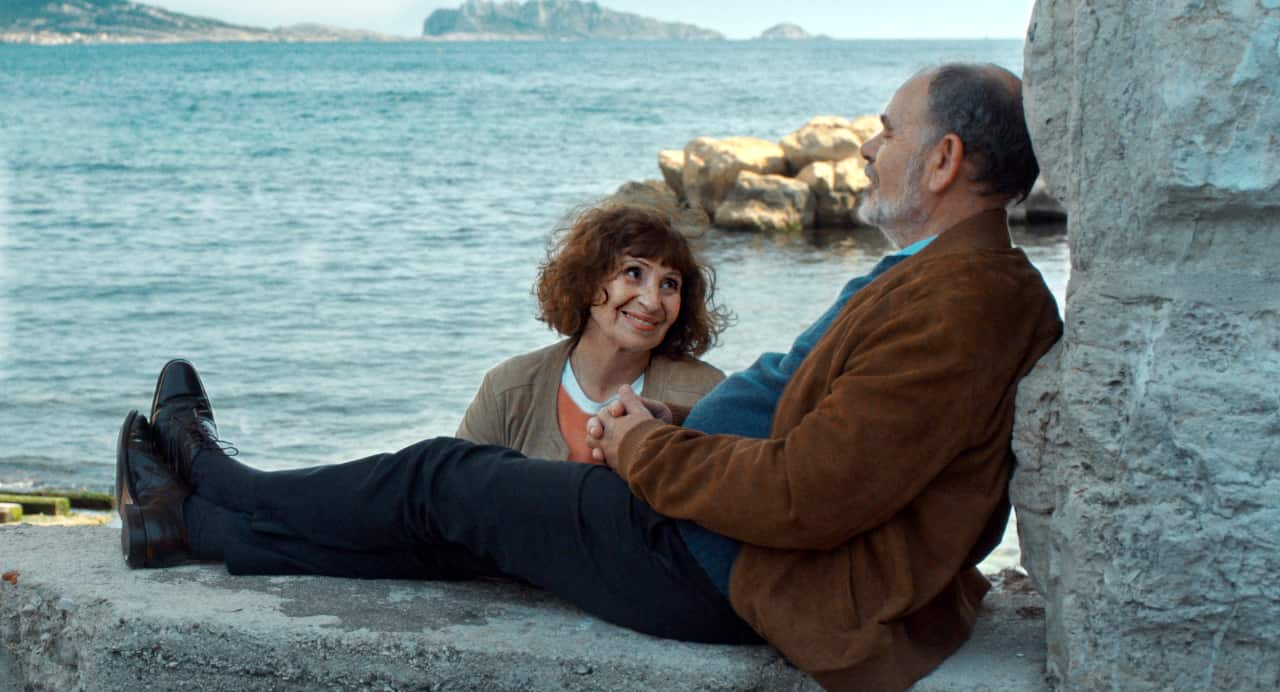A DE PALMA MOVIE FOR PEOPLE WHO DON’T LIKE DE PALMA MOVIES
by Pauline Kael
Al Pacino’s Tony Montana is small and mean. The slash of a scar that runs through one eyebrow and down across the cheekbone seems to go right to his soul; there’s something dead in his face—as if ordinary human emotions had rotted away, leaving nothing but greed and a scummy shrewdness. As the central character in the new Scarface, directed by Brian De Palma from a script by Oliver Stone, he scrambles up the rungs of the Miami drug world the way that Paul Muni, as an Italian immigrant, climbed to the top of the Chicago bootlegging business in the 1932 Scarface. Modelled on the career of Al Capone, the 1932 film, like the other prototypical gangster pictures—Little Caesar and The Public Enemy, both of 1931—was set during Prohibition. The basic story fits right into the early eighties: the new Scarface is a Cuban, one of an estimated ten thousand inmates of jails and mental institutions whom Castro, having his little joke, deported to the United States in 1980, when President Carter (briefly) opened the doors to Cuban refugees. Tony Montana boils with resentment because other people have a soft life, and more money than he has. “Me, I want what’s coming to me,” he says—”the world and everything in it.’’ He’s an angry, vindictive killer, and he sees America as the land of opportunity.
For the first three-quarters of an hour, the film is garish and intense. With Giorgio Moroder’s synthesizer music pulsating and with shots of the arrival of the “Marielitos” (the Cubans who set out from Mariel Harbor), it feels like the beginning of a new-style, post-Godfather gangster epic—hot and raw, like a spaghetti Western. The swaying movements of music and image suggest a developing delirium. In these lushly ominous early sequences, the-American immigration officers spot Tony for what he is, and they put him and his pal Manolo (Steven Bauer) in a detention camp. We see the sadistic murder that the two of them carry out in order to buy their freedom, and then the first drug deal that Tony handles, which turns into a bloody massacre. These two sequences are planned and edited with staccato, brutal efficiency; De Palma seems to be adapting his techniques to naked melodrama, chain-saw and all. (The massacre is awesome—a slapstick comedy of horrors which just goes streaking by.) And our first encounters with the other characters raise our expectations. Frank Lopez, the Hispanic-Jewish kingpin of the Miami drug trade, who takes a fancy to Tony, is like any number of movie producers: as played by Robert Loggia, he’s a big, beefy windbag who enjoys being expansive and handing out paternal advice. Frank’s bored girlfriend, Elvira, a Wasp junkie with silken blond hair and a mannequin’s cool, is played by Michelle Pfeiffer, a funny, sexy beauty who slinks across the screen—she’s the Platonic ideal of classy hooker. And Frank’s henchman, Omar, an anxious pockmarked creep who has a big laugh for his boss’s jokes, is played by the whirlwind F. Murray Abraham; he manages to look like a shark here, and every time he appears in a scene, its energy level jumps.
The film is fine until it gets into the 1932 story. The original Scarface unfolded rapidly; the scenes went bambam fast. In this 1983 Scarface, the same scenes are played languorously, in stately, pseudo-Godfather style, as if something were going on in the characters—as if they had an interior life and were going to grow or change. Just when De Palma needs every trick he can come up with, he gives up on “style” and goes straight. The original had a core of wit, but Oliver Stone’s script just seems to touch the old bases, and after those showy early sequences De Palma tromps through the stock situations; nothing else he does has the rash brilliance of that Mack Sennett chain-saw sequence. His handling of the minor actors may be better than ever (Arnaldo Santana has a scene as Ernie—a flunky who expects to be killed and then isn’t—that any actor could be proud of), and he works in a lot of little zaps, and always provides you with something to look at. It’s the stuff up front that’s sluggish. When Howard Hawks, who directed the 1932 film, and Ben Hecht, who wrote the script, decided to give their Al Capone and his sister the incestuous passions of the Borgias, they were having a nose-thumbing good time. This new film lingers over Tony’s possessiveness about his sister, and is so obvious about it that the picture manages to make incest seem dated. Mary Elizabeth Mastrantonio, who plays the fiery sister, has a great camera face and is clearly raring to give a performance, but she’s stuck with scenes that refer back to the mores of 1932. When Tony’s mother (Miriam Colon)—a bone thrown to the moralists—goes through the standard poor-but-proud speech, telling him how worthless he is, the episode has an echo-chamber effect. If the actress faltered in her lines, the audience could prompt her.
De Palma may have felt that he could stretch himself by using a straightforward approach—something he has never been very good at. But what happens is simply that he’s stripped of his gifts. His originality doesn’t function on this crude, ritualized melodrama; he’s working against his own talent. In desperation, he seems to be trying to blast through the pulpy material to something primal, and it isn’t there. He keeps attempting to whip up big animalistic scenes, and then plods through them. And as the action rolls on, F. Murray Abraham is bumped off, and then Loggia (along with Harris Yulin, who turns up as a self-satisfied crooked narc and does perhaps the best work he’s ever done on the screen). And the piquant Michelle Pfeiffer—she hunches her beautiful skinny shoulder blades when she’s inhaling coke—doesn’t have enough disdainful, comic opportunities.
After a while, Pacino is a lump at the center of the movie. His Tony Montana has no bloom to lose, and he doesn’t suggest much in the way of potential: heights aren’t built into him. Nothing develops in Pacino’s performance. This is a two-hour-and-forty-nine-minute picture with a star whose imagination seems impaired. He wants to show us what an ignoramus this big-shot gangster is, and the role becomes an exercise in loathsomeness (on the order of De Niro’s performance in Raging Bull), without internal contradictions or shading. Pacino isn’t a lazy actor, and sometimes he comes up with invention that’s really inspired —like the way Tony, who’s all eyes for Elvira, bobs around her on the dance floor. It’s the only time he seems youthful: Elvira wriggles by herself, grinding her pelvis ever so slightly—this is her notion of sophisticated dancing—and he bounces about like a horny country bumpkin. (Pacino was also inspired in the contorted, ugly dancing he did in Cruising. ) But most of the time here he goes through the motions of impersonating a dynamo while looking as drained as he did at the end of The Godfather, Part II. He has no tension—his “dynamic” movements don’t connect to anything inside him. Then he gives up the fake energy, and this is supposed to stand for Tony’s disintegration. He’s doing the kind of Method acting in which the performer wants you to see that he’s living the part and expects you to be knocked out by his courage in running the gauntlet. Pacino is certainly willing to go all the way with Tony’s drunken and drugged-out loutishness. But he may be too comfortable with it; he’s sodden.
There was a major difference between Paul Muni’s Tony in Scarface and both Edward G. Robinson’s Rico in Little Caesar and James Cagney’s Tommy Powers in The Public Enemy: Tony wasn’t likable. It was his jabbing, phallic drive—the sheer “I want” force of the man—that made him exciting to watch. Stone and De Palma have retained this idea; likability is left to Steven Bauer, as Tony’s loyal friend Manolo (the role played by George Raft in the 1932 version). Bauer, a bilingual Cuban-American in his mid-twenties who appeared in the eighteen-episode public-television series ¿Qué Pasa, USA? under the name Rocky Echevarria, brings the picture a nifty mixture of businesslike murderousness and lover-boy sweetness. You can hook in to his character, and you may experience a pang when Manolo is killed. But Pacino is not the darting, energetic gangster hero who scores and scores. He’s hollow from the start—he seems to have to act to look alive. And you don’t feel a thing when Tony is finished.
This Scarface has the length of an epic but not the texture of an epic, and its dramatic arc is faulty: Tony is just starting to learn the ropes, and then, sated with wealth and dope, he’s moldy. He seems to get to the top by one quick coup. We need to see more of his rise and how he managed it—how he built his organization and won the loyalty of his men. And we need to see his triumph. We miss out on the frightening exhilaration of Tony’s winning his crown; there’s no satisfaction for Tony or for the audience. We don’t even get any of the gangster conspiracies that we might enjoy. The middle of the movie is missing. We get the aftermaths but not the capers. And Pacino seems to shrink with power; he looks as if he’s about to disappear in a puff of coke.
Pacino has several scenes in which he’s practically buried in money —we are given to understand that it’s coming in so fast that it’s a joke. And he also has scenes in which he’s covered in cocaine: Tony dunks his face in it, or just shoves his snout in it. This, too, is a joke—the whole movie is a joke about consumerism (and capitalism). Tony gets everything he wanted—an estate with a tiger on the grounds, an enormous sunken tub for his bubble baths. The grandiose visual effects include a blimp with the words “The World Is Yours” spelled out in lights; it appears in the sky on the night that Tony disposes of Frank Lopez and lays claim to Elvira. The same words—they were the motif of the 1932 film, also—appear on the lamp (a globe of the world) that lights the Pompeian entranceway of the mansion that Tony and Elvira live in after they’re married. The joke is how shallow he is, how degraded. He’s a pig rooting around in money and cocaine, and, as things go wrong, he snorts more and more. (This could be a summary of how some movies are made now.)
Probably all this excess is intended to be satirical—snorting coke turns into a running gag. But the scenes are so shapeless that we don’t know at what point we’re meant to laugh. The ludicrousness that the moviemakers are showing us can’t be sorted out from the ludicrousness of the movie itself. When the quick-tempered Elvira, who has regarded Tony as filth since the first time she saw him, suddenly throws a drink at him, and says accusingly, “Can’t you see what we’ve become!,” her line is a howler. And when Elvira complains of the boringness of Tony’s constant use of a seven-letter obscenity it’s like a criticism of the picture. The obscenities here are boring; they’re used in the enervated way they were in Rumble Fish—the lines sound as if the actors were making them up. And in a picture with Ferdinando Scarfiotti as the visual consultant and such extravagant theatrical effects as rooms and terraces that are pastel abstractions, a painted mural of a tropical paradise on Frank Lopez’s office wall, and home furnishings that suggest Roman Empire Art Deco, the flat, stunted language seems almost campy, like the language in the Maria Montez-Jon Hall-Turhan Bey epics. What is a moviegoer supposed to be thinking about while listening to Elvira’s impassioned “We’re losers, not winners” or hearing Tony say of Elvira, “Her womb is polluted”? (He also comes up with some variant of “You touch my seester, I keel you.”)
The movie turns funny through a curdled, unfunny blowsiness. Tony doesn’t even spit out his expletives anymore; he slurs them. Elvira accuses him of not being much of a lover, and he sprawls in his bubbles in his big tub watching TV and muttering, “I don’t need nobody.” This isn’t the usual La Dolce Vita, you’re-never-happy-when-you-get-what-you-want movie. Tony is progressively immobilized. He lolls in the circular tub, and the camera rises high above him—he’s a cigar butt in a bird’s-eye view of an ashtray. The camera has to move because he isn’t going to move. The dialogue doesn’t move the scenes forward, either, and the action slows to next to nothing.
Tony is such a coked-up dullard that many of us in the audience— especially women—may lose all interest in him. His lassitude is our lassitude. But the moviemakers expect us to care about him because of their conception of his force. Near the start, Tony tells Frank Lopez that “the only thing that gives orders in this world is balls.” And Tony, as he keeps demonstrating by his brutality, has “steel in his balls.” That’s what separates him from the other gangsters: he’s fearless. This fearlessness—the cojones of a hit man—is the only explanation that the movie offers for Tony’s rise in the world. And because he isn’t afraid of anybody he dares to speak his mind. In a restaurant full of white-haired fat cats—a Wasp millionaires’ stronghold—he yells, “You don’t have the guts to be what you wanna be! You need people like me. You need people like me so you can point your fucking fingers and say, ‘That’s the bad guy.’ ”
Tony may sound almost passive; he may dribble saliva. But this is the film’s message (or rationalization): that Tony is an honestly brutal businessman—he isn’t a hypocrite like the Wasps. There’s even the suggestion that he’s better than they are because he isn’t afraid to do his own killing. (The film’s message is like a sociopathic moron’s interpretation of Robert Warshow’s thesis in his famous essay The Gangster as Tragic Hero.) The restaurant sequence is especially tinny, because the Establishment millionaires and their ladies are the usual Hollywood dress extras, and their polite, aghast expressions (and anonymous, helpful buzz) give them a stiff, Pop Art stuffed-dummy look. They’re in a time warp. This isn’t just a sloppy piece of filmmaking, though—it’s the only piece of rabble-rousing that I’ve ever seen in a De Palma movie. When Tony, the drunken, corrupted peasant, tells off the old rich, he appears to be speaking for the writer and the director. And from the film’s point of view he knows the truth about power and how it works. (It may be that Stone and De Palma got into these cheap distortions by using the movie business as their model for the world.)
The picture is peddling macho primitivism and at the same time making it absurd. Tony’s sister does a creeping-hellcat seduction number on him, and he doesn’t respond. She empties a gun at him, and her bullets can’t kill him (or don’t, anyway); he gets more vital as he’s pumped full of lead. It takes men to shoot him down—in a rampaging, White Heat finale that involves an army of assassins and fills the screen with corpses, without generating much excitement.
At the beginning, we’re led to expect that something terrible will happen, and what happens is that the director’s concentration seems to fall apart, and his energies are dispersed. Maybe in giving up his artistry De Palma was trying to identify with Pacino’s performance, and trying to persuade himself that the methods he was using here were more honest, more truthful than the way he’d worked on his other pictures. But Pacino’s Tony has nothing to reveal. Scarface is a long, druggy spectacle—manic yet exhausted, with De Palma entering into the derangement and trying to make something heroic out of Tony’s emptiness and debauchery. The director is doggedly persistent—compellingly so— but the whole feeling of the movie is limp. This may be the only action picture that turns into an allegory of impotence.
The New Yorker, December 26, 1983





1 thought on “SCARFACE (1983) – REVIEW BY PAULINE KAEL”
Hmm, I am guessing the original author did not enjoy this film as much as I did but then again, I could be mistaken…